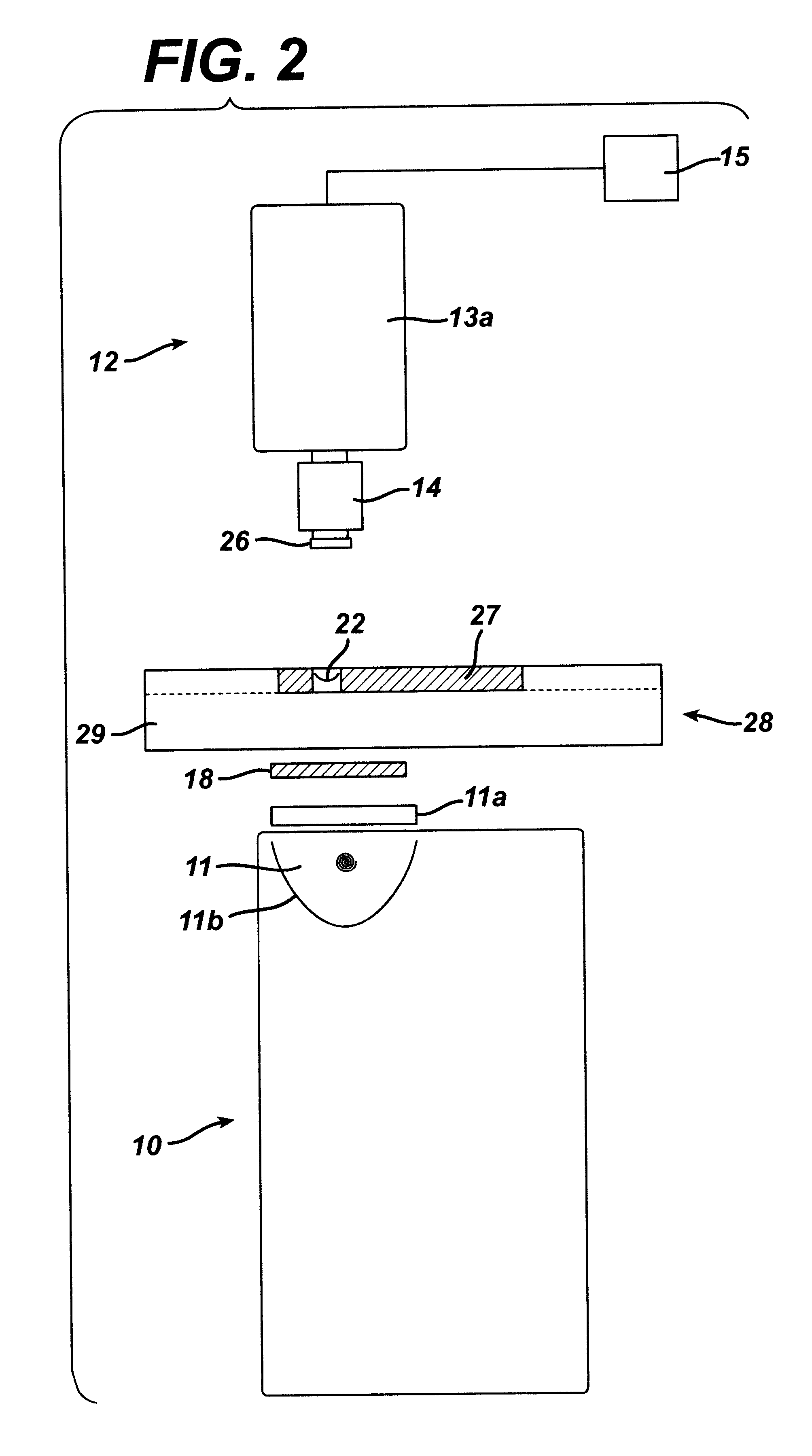Inspection of ophthalmic lenses using absorption
a technology of ophthalmic lenses and absorption, applied in the field of optical media inspection, can solve the problems of too many false rejections of lenses, affecting the accuracy of lens inspection, and the labor intensive nature of human operators, and provoking interest in automating the process
- Summary
- Abstract
- Description
- Claims
- Application Information
AI Technical Summary
Problems solved by technology
Method used
Image
Examples
Embodiment Construction
The inspection of HEMA-based soft contact lenses for various cosmetic flaws and extraneous artifacts is compared. Representative of the practice of the present invention are the techniques identified hereinbelow as UVI (typified by FIG. 1B) and UV2 (typified by FIG. 1C).
In TABLE 1, the scale of 1-5 represents sensitivity. In descending order, the number 5 means that the technique will have the highest relative sensitivity to the subject artifact or flaw; the number 1 means the technique will have the least relative sensitivity to same. Of the artifacts, those identified as A and B, "carrier imperfections" and "material pulled up," represent extraneous artifacts that are unimportant to lens inspection. It is thus desirable that they have a sensitivity less (e.g. as close to 1 as possible) as opposed to cosmetic flaws C, D, E and F which are important to ophthalmic lens inspection and quality. As seen in TABLE 1, Bright Field (BF) and Dark Field (DF) will accord defects A and B sensit...
PUM
| Property | Measurement | Unit |
|---|---|---|
| wavelength | aaaaa | aaaaa |
| wavelength | aaaaa | aaaaa |
| wavelength | aaaaa | aaaaa |
Abstract
Description
Claims
Application Information
 Login to View More
Login to View More - R&D
- Intellectual Property
- Life Sciences
- Materials
- Tech Scout
- Unparalleled Data Quality
- Higher Quality Content
- 60% Fewer Hallucinations
Browse by: Latest US Patents, China's latest patents, Technical Efficacy Thesaurus, Application Domain, Technology Topic, Popular Technical Reports.
© 2025 PatSnap. All rights reserved.Legal|Privacy policy|Modern Slavery Act Transparency Statement|Sitemap|About US| Contact US: help@patsnap.com



